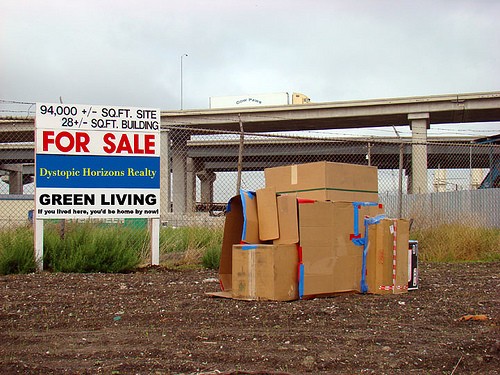Marathon Girl and I are thinking about moving. No, we’re not heading to Texas, North Carolina, Colorado, or Arizona. Though the desire to move out of state is still there, we both enjoy my current job, benefits, coworkers, and other work-related perks too much to go elsewhere. We are, however, looking at buying a different home—one that’s a little bigger and more centrally located than our current home. We’re in the early stages of this process which means we’re just scoping out what homes are on the market and what the neighborhoods are like and discussing whether or not this is a step we want to take now or sometime next year.
One of the things we’ve noticed while we drive from neighborhood to neighborhood is how the naming conventions of subdivisions and their streets are very similar. In Utah developers have lots of leeway when it comes to naming streets in the neighborhoods they build. For example a new subdivision named Mountain View Estates might have streets named after local mountains. The flexibility to name streets sometimes comes in handy when residents are opposed to a bunch of houses going up in their back yard. For example, a developer in my parents neck of the woods got the local residents involved in naming the subdivision and streets in that development in order to get more of them to support the development.
Despite this flexibility most subdivisions and streets tend to have similar themes. The consequence of this is that if you drive through enough of them looking at homes (as Marathon Girl and I have been doing lately) none of them tend to stand out. It’s made me think that if I ever had the money and desire to become a developer, I’d come up with street and subdivision different enough that maybe it would make it a bit more memorable—in a good way of course. Something like Proofrock Lane, Dickinson Drive, Hughes Avenue, or Yeats Boulevard. Okay, maybe there are better options but you get the point.
Last week the similar-named subdivision monotony was broken when we checked out a home in a subdivision named Willow Place. It quickly became apparent that the developer had a thing for willows. Streets were named Willow Way, Willow Drive, Willow Patch, Willow Sprout, Willow Pod, Willow Reed and so on. (We might have even passed by a Willow Park, I think.) What was at first something kind of quirky and different quickly became annoying as navigating our way through the neighborhood became difficult because the streets were so similarly named. Though we were finally able to find the house in question, by the time we found it we decided that it wasn’t worth living in a neighborhood that was so confusing to drive around.
The incident made me appreciate most other themed street names. As bland as they may be, most builders seem to have the sense to at least diversify the naming conventions to make them easy to navigate. Still, there has to be a happy middle ground--one
Angelou Avenue, anyone?

